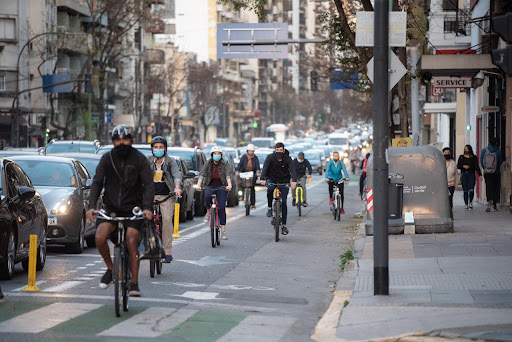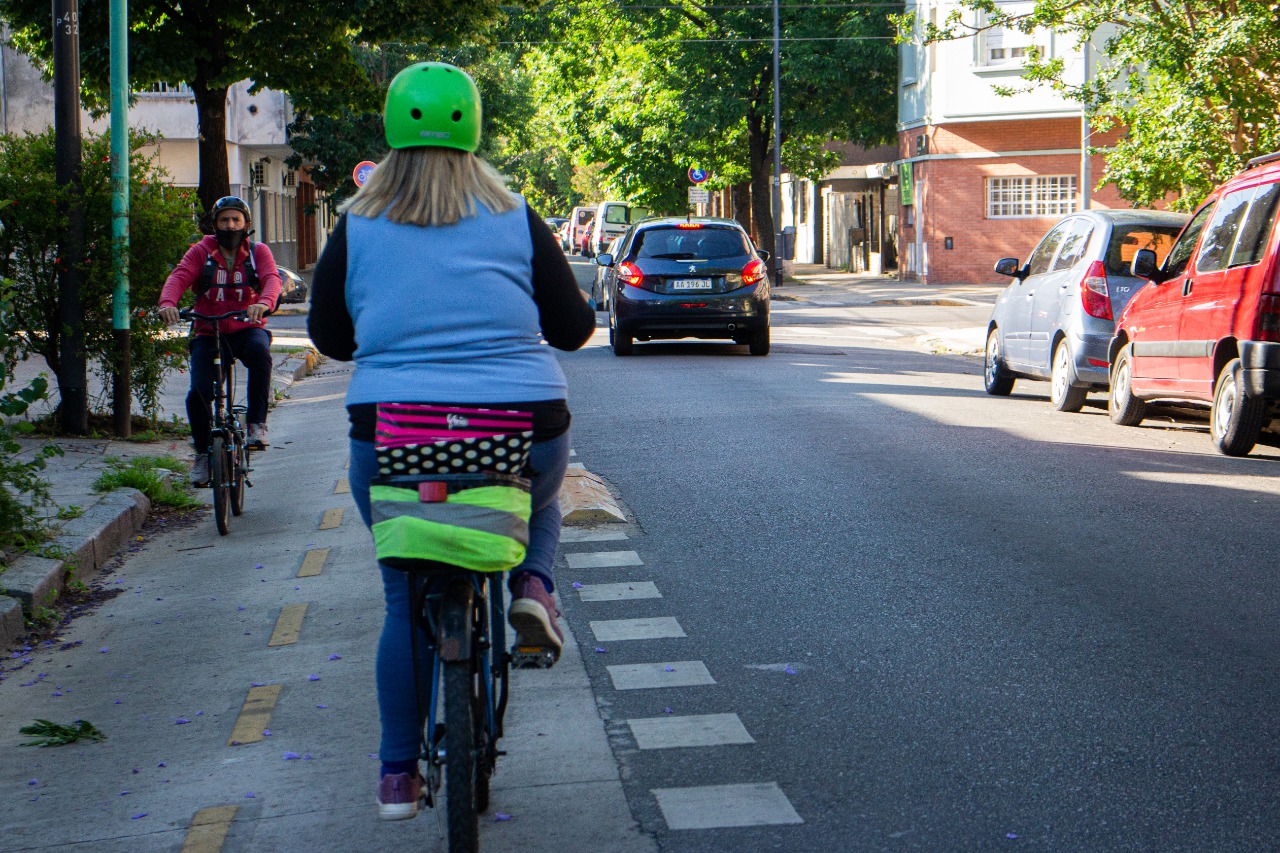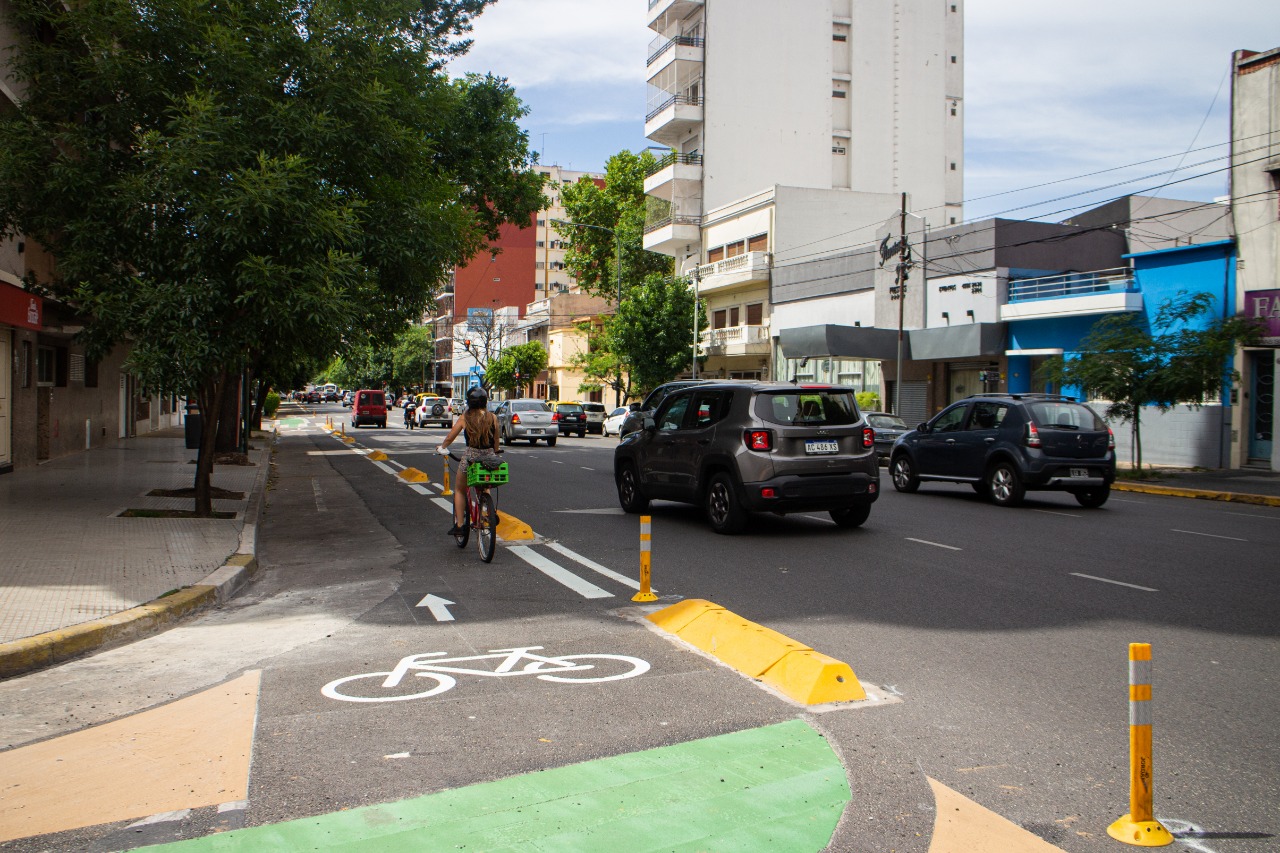Pathfinder Initiative, 2023
Implementing partners: The City of Buenos Aires
Published In: COP28 Prospectus of Climate-Health Solutions, 2023
Pathfinder Initiative, 2023
Implementing partners: The City of Buenos Aires
Published In: COP28 Prospectus of Climate-Health Solutions, 2023
In 2020, the transport sector in Buenos Aires alone emitted around 3.6 megatonnes of greenhouse gas emissions (approximately 30% of city’s total emissions). The city is transitioning to clean mobility and sustainable modes of transport, with an aim to become carbon neutral by 2050. Since 2009, the city has encouraged active travel and developed a network of bicycle lanes to create safer and accessible roads for cyclists. In addition to reducing greenhouse gas emissions, the use of bicycles has significant co-benefits for health, as active transport can substantially improve cardiovascular health, reduce metabolic disease, and improve fitness. In addition, creation of dedicated lanes also reduces the frequency and chances of accidents.
Buenos Aires has a long history of recognising the importance of safe, active travel, which facilitated the development of the “More bikes, less emissions” (Más bicis, menos emisiones) program. This included introduction of EcoBici scheme and creation of a cycle network. EcoBici is a bicycle sharing scheme that allows citizens to rent a bicycle for free 24 hours a day, every day, all year long. There are around 270 EcoBici stations available across 15 Communes in Buenos Aires. The city also offers free instalment loans for bicycle purchases through the local Banco Ciudad. Furthermore, the city is now developing safe storage and parking areas for bicycles throughout the city.
As part of the Protected Bicycle Lanes Network programme which was initiated in 2009, a 286 kilometre long cycle network has been developed throughout the city, connecting the city center with nearby populous neighborhoods. The cycle lanes strategically link key areas and buildings, such as schools, universities, and hospitals, as well as the less densely populated areas to ensure that the bike lanes are accessible to all. The COVID-19 pandemic further amplified the need for cycle lanes and bike sharing, as many citizens avoided crowded public transport and took up cycling instead. To deal with this increase, the cycle lane network was further expanded.
Since 2013, there has been a 131% increase in the number of bicycle trips made in Buenos Aires. In 2020, cycling accounted for 10% of all trips made in the city. Based on the survey data on travel mode shifts and cycle trips, it is estimated that the bicycle program resulted in a reduction of 12,155 tonnes of greenhouse gas emissions in 2020. The city aims to reach one million daily cycle trips by 2023.
In addition to the environmental benefits, the cycle program has also helped in creating safer roads for cyclists. The number of cyclists killed decreased from 0.10 per million cycle trips in 2015 to 0.02 per million cycle trips in 2020, with many of the fatal cycling accidents being outside the network of cycle lanes.
There is also some indication that the new cycle lanes encouraged active travel by women; along the newly developed cycle lanes (Córdoba and Corrientes Avenues) there was a threefold increase in the number of cycle trips made by female cyclists.
However, a bike program alone will not be sufficient to create substantial change. To reduce overall emissions from the sector the city has also implemented actions to reduce the number of cars on the streets. The overall ambition is to establish Buenos Aires as a polycentric city, with multiple city centers where people can work, run errands and carry out leisure activities in their neighborhood. This will transform a street in each of the 48 neighborhoods into a “meeting street”, including a pedestrian zone and multiple recreational activities. This is a similar concept to the “15 minute city”, an urban living concept, where essential amenities can be reached within a 15 minute walk or a bike ride. The aim is to create walkable and bikeable neighborhoods to reduce the need to travel to the city center and to avoid traffic congestion.




of